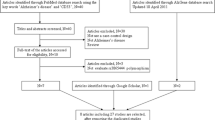Abstract
CD33 and MS4A6A genes play potential key roles in the pathogenesis of Alzheimer’s disease (AD). One recent genome-wide association study has revealed that the rs3865444 polymorphism in the CD33 gene and rs610932 polymorphism in the MS4A6A gene are associated with susceptibility to AD in Caucasians. To evaluate the relationship between the polymorphism of the CD33, MS4A6A gene and AD in the ethnic Chinese Han, we conducted a case–control study (n = 383, age > 54) to determine the prevalence of single-nucleotide polymorphism of two genes in patients with AD in Chinese population of Mainland, and clarified whether these polymorphisms are risk factors for AD. The prevalence of the allele (T) in the rs3865444 polymorphism of the CD33 gene and allele (C) in rs610932 polymorphism of the MS4A6A gene was significantly different in AD patients and control subjects (P < 0.001, respectively), and the results were not influenced by age, gender, or APOE status. Our data revealed the allele (T) of the rs3865444 polymorphism of the CD33 gene and the allele (C) of the rs610932 polymorphism of the MS4A6A gene may contribute to AD risk in the Chinese Han population.
Similar content being viewed by others
References
Bertram L, McQueen MB, Mullin K, Blacker D, Tanzi RE (2007) Systematic meta-analyses of Alzheimer disease genetic association studies: the AlzGene database. Nat Genet 39:17–23
Boche D, Nicoll ARJ (2008) The Role of the immune system in clearance of Ab from the brain. Brain Pathol 18:267–278
Cao H, Crocker PR (2011) Evolution of CD33-related siglecs: regulating host immune functions and escaping pathogen exploitation? Immunology 132(1):18–26. doi:10.1111/j.1365-2567.2010.03368.x (Epub 2010 Nov 11. Review)
Corder EH, Saunders AM, Strittmatter WJ et al (1993) Gene dose of apolipoprotein E type 4 allele and the risk of Alzheimer’s disease in late onset families. Science 261:921–923
Cornutiu G (2011) The incidence and prevalence of Alzheimer’s disease. Neurodegener Dis 8(1–2):9–14 (Epub 2010 Aug 4)
Crocker PR, Paulson JC, Varki A (2007) Siglecs and their roles in the immune system. Nat Rev Immunol 7:255–266
Du Y, Dodel R, Hampel H, Buerger K, Lin S, Eastwood B et al (2001) Reduced levels of amyloid beta-peptide antibody in Alzheimer disease. Neurology 57:801–805
Dubois B, Feldman HH, Jacova C et al (2007) Research criteria for the diagnosis of Alzheimer’s disease: revising the NINCDS-ADRDA criteria. Lancet Neurol 6:734–746
Hardy J (1997) Amyloid, the presenilins and Alzheimer’s disease. Trends Neurosci 20:154–159
Hardy JA, Higgins GA (1992) Alzheimer’s disease: the amyloid cascade hypothesis. Science 256(5054):184–185
Hollingworth P, Harold D, Sims R, Gerrish A, Lambert JC, Carrasquillo MM, Abraham R et al (2011) Common variants at ABCA7, MS4A6A/MS4A4E, EPHA1, CD33 and CD2AP are associated with Alzheimer’s disease. Nat Genet 43(5):429–435 (Epub 2011 Apr 3)
Howie D, Nolan KF, Daley S, Butterfield E, Adams E, Garcia-Rueda H, Thompson C, Saunders NJ, Cobbold SP, Tone Y, Tone M, Waldmann H (2009) MS4A4B is a GITR-associated membrane adapter, expressed by regulatory T cells, which modulates T cell activation. J Immunol 183(7):4197–4204 (Epub 2009 Sep 14)
Liang Y, Buckley TR, Tu L, Langdon SD, Tedder TF (2001) Structural organization of the human MS4A gene cluster on Chromosome 11q12. Immunogenetics 53:357–368
Moir RD, Tseitlin KA, Soscia S, Hyman BT, Irizarry MC, Tanzi RE (2005) Autoantibodies to redox-modified oligomeric Abeta are attenuated in the plasma ofAlzheimer’s disease patients. J Biol Chem 280:17458–17463
Morgan K (2011) Commentary: the three new pathways leading to Alzheimer’s disease. Neuropathol Appl Neurobiol. doi:10.1111/j.1365-2990.2011.01181.x (Epub ahead of print)
Naj AC, Jun G, Beecham GW, Wang LS, Vardarajan BN, Buros J, Gallins PJ et al (2011) Common variants at MS4A4/MS4A6E, CD2AP, CD33 and EPHA1 are associated with late-onset Alzheimer’s disease. Nat Genet 43(5):436–441 (Epub 2011 Apr 3)
Salminen A, Kaarniranta K (2009) Siglec receptors and hiding plaques in Alzheimer’s disease. J Mol Med 87(7):697–701 (Epub 2009 Apr 24)
Sandford AJ, Moffatt MF, Daniels SE, Nakamura Y, Lathrop GM et al (1995) A genetic map of chromosome 11q, including the atopy locus. Eur J Hum Genet 3:188–194
Zuccolo J, Bau J, Childs SJ, Goss GG, Sensen CW, Deans JP (2010) Phylogenetic analysis of the MS4A and TMEM176 gene families. PLoS ONE 5:e9369
Acknowledgments
This study was supported by the National Basic Research Development Program of China (No. 2010CB945200, 2011CB504104), National “Twelfth Five-Year” Plan for Science and Technology Support (No.2012BAI10B03), Shanghai Key Discipline Program (No.S30202), Shanghai Key Project of Basic Science Research (No. 09DZ1950400), Shanghai Natural Scientific Fund (No. 09JC1416402, 09ZR1419100), Shanghai Jiao Tong University Medical and engineering Joint Key Project (No.YG2010ZD102) and the Program for Outstanding Medical Academic Leader (No. LJ 06003).
Author information
Authors and Affiliations
Corresponding authors
Additional information
Y.-L. Deng, L.-H. Liu contributed equally to this work.
Rights and permissions
About this article
Cite this article
Deng, YL., Liu, LH., Wang, Y. et al. The prevalence of CD33 and MS4A6A variant in Chinese Han population with Alzheimer’s disease. Hum Genet 131, 1245–1249 (2012). https://doi.org/10.1007/s00439-012-1154-6
Received:
Accepted:
Published:
Issue Date:
DOI: https://doi.org/10.1007/s00439-012-1154-6




